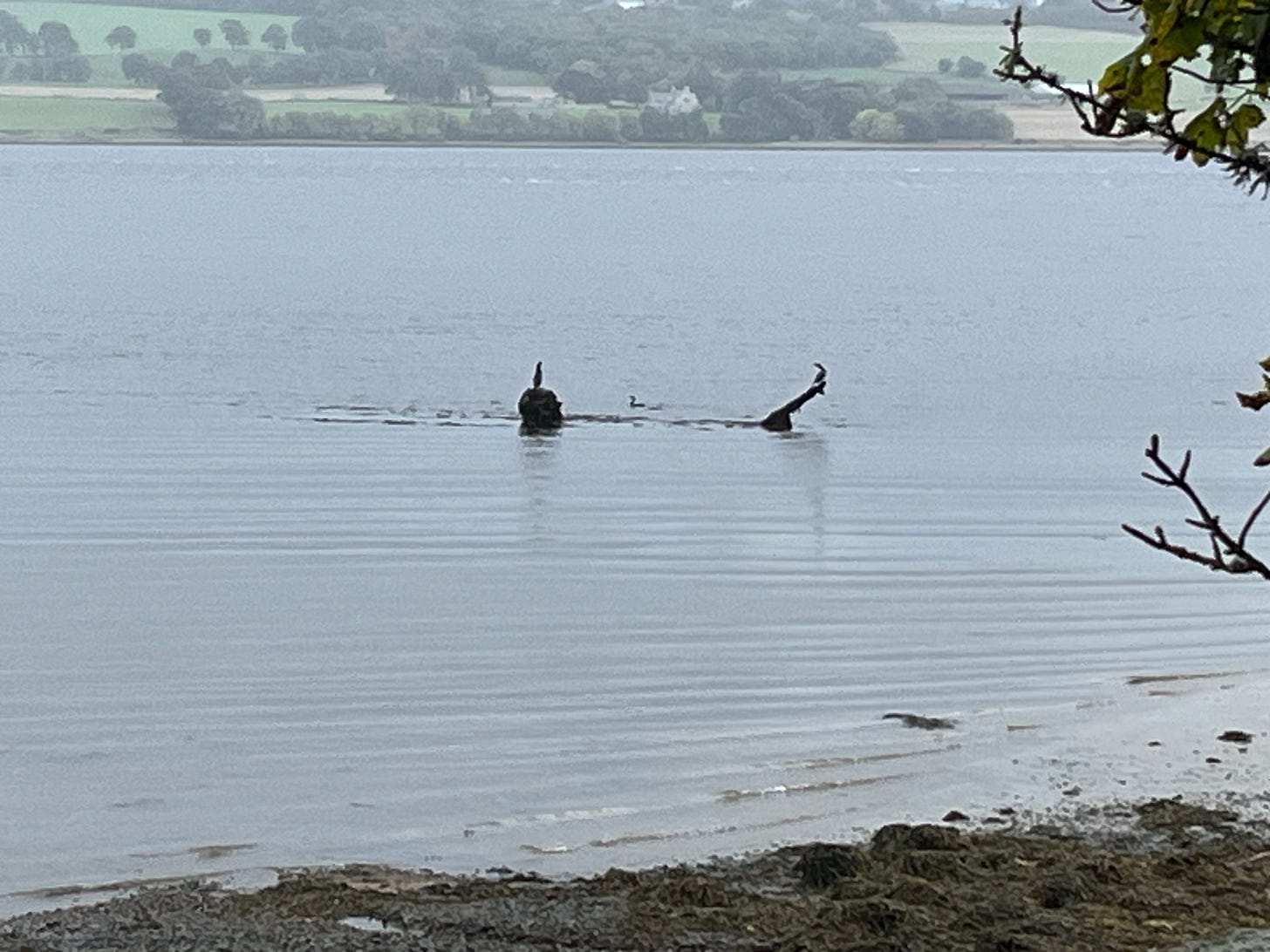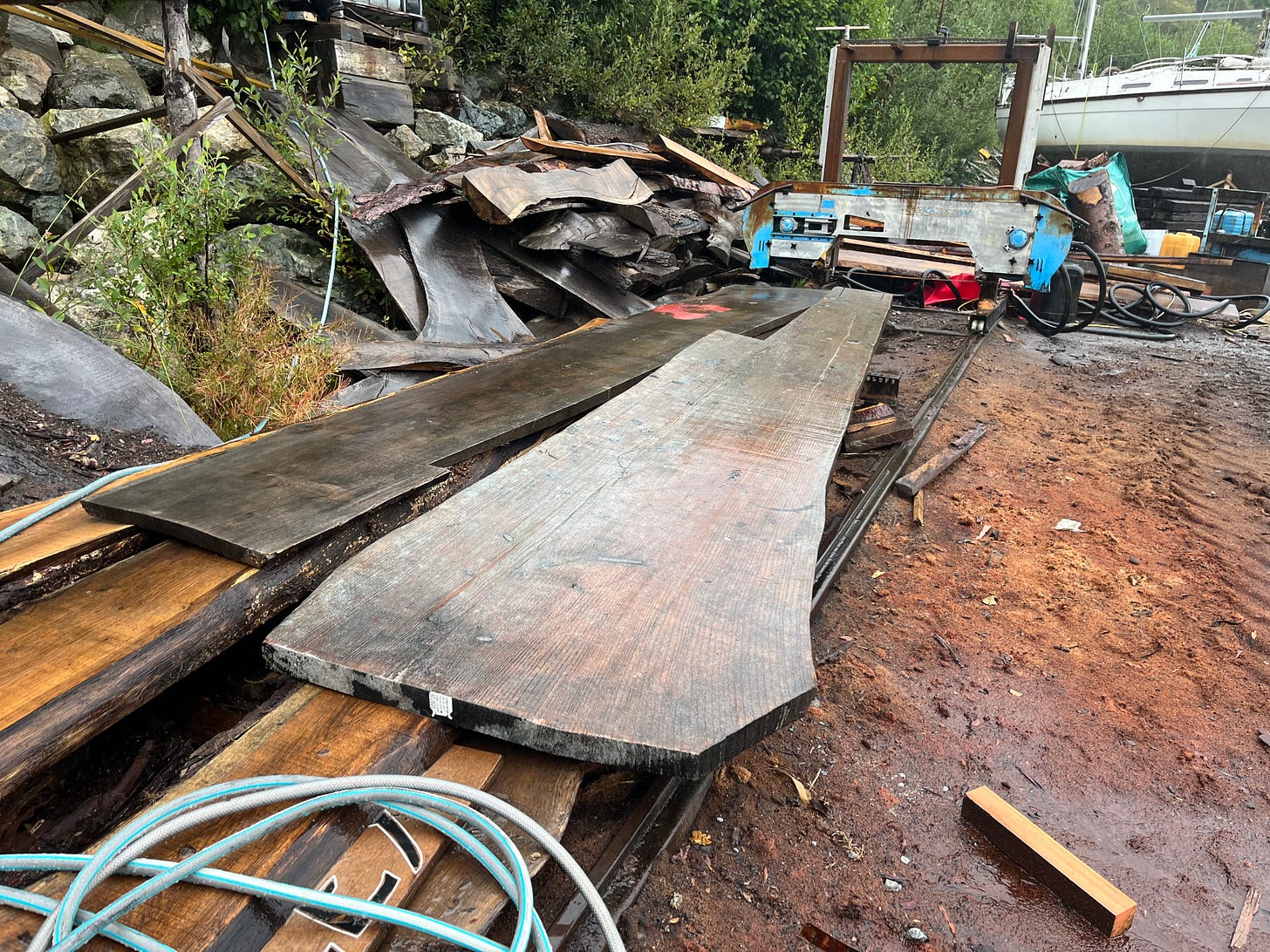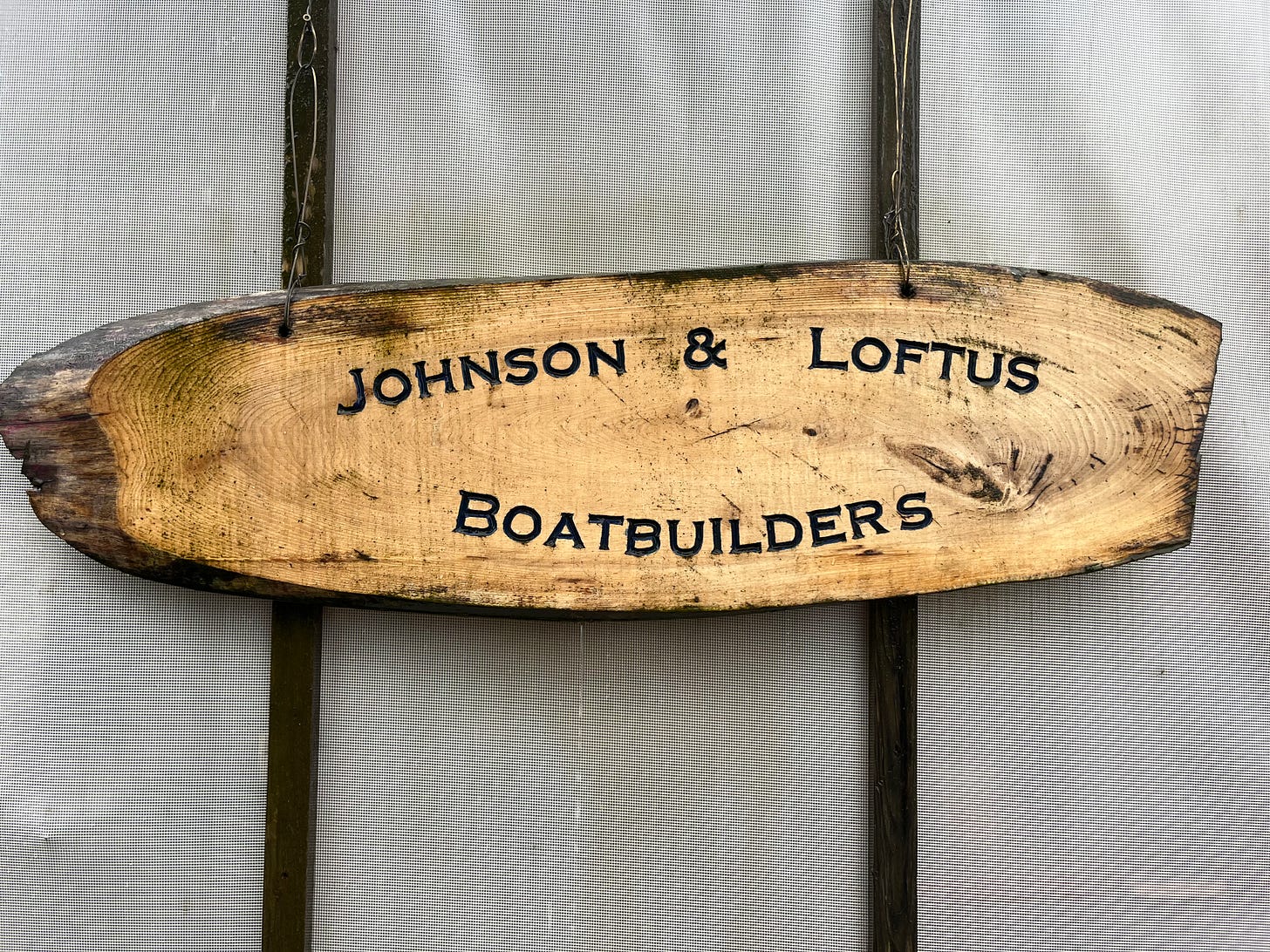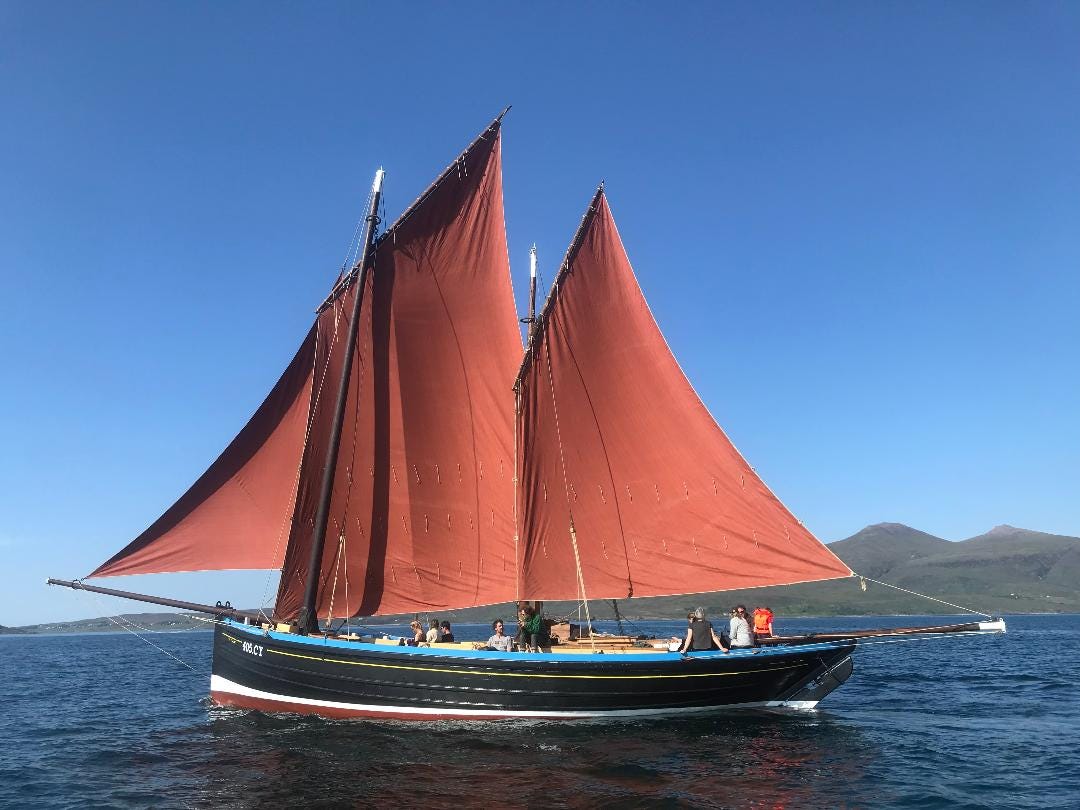Epic renovation project evokes echoes of Whisky Galore and the silver darlings
West Highland craftsmen rebuild one of the last remaining links to the SS Politician

IT is a tale that has grown into legend: the cargo ship SS Politician running aground off the Isle of Eriskay in February 1941 and the islanders racing to liberate 22,000 cases of whisky from its hold ahead of chasing customs officers.
There has been a novel, two films, countless documentaries and even songs celebrating the islanders’ endeavours in the 80-plus years since.
But now there is something a little more real, something made of wood and canvas which creaks and snaps with the wind that takes us right back to the events of Whisky Galore.
This is the Saint Vincent, a century-old herring drifter which was disintegrating in Arbroath Harbour until it was rescued three years ago, taken to a small craft boatyard high up in the Northwest Highlands and restored to a condition that the builders believe will last another 100 years.
The St Vincent provides a living, working bridge back to the early days of last century and the twin products on which many Highland communities were built: herring and whisky.
The St Vincent was built in 1910 by Moray Firth boatbuilders W&G Stephen for a fishing family on Eriskay, the Macdonalds, and it was in the Western Isles, 30 years later, that she is reported to have played a key role in repatriating dozens of cases of whisky from the stricken SS Politician before the customs officials could get there.
When she first slid off slipway in Banff, smelling of varnish and fresh timber, the St Vincent represented the pinnacle of sail-driven herring boats. The two-masted, six-crew Zulu was based on two earlier fishing boats, the Fifie and the Skaffie but was bigger and faster.
First designed by Walter Campbell of Lossiemouth in 1879, the year of the Zululand war in South Africa, Zulu herring luggers were built up to the First World War.
When they were out at sea, the crew would take the masts down, lay the nets over the side and drift for up to 24 hours, hauling in several tonnes of fish and racing back to port so the herring could be cured and sent abroad.
By 1913, there were 10,000 Scottish boats catching 250,000 tons of herring a year for curing and export. There was hardly a coastal harbour town without a curing station for the ‘silver darlings’ as the herring were known.
The First World War, which stripped many towns of sailors, the diesel engine and a collapse in fishing stocks, all combined to tear the heart of this once thriving industry and the sail boats which serviced it.
Until the St Vincent project was completed, the nearest anyone in the Highlands could get to these once ubiquitous vessels was to look out from Foulis Point near Dingwall across to the Black Isle. There, in mud at low tide, are the skeletons of two Zulus, all that is left of a dozen vessels which were pulled up on to the sand by a farm threshing machine in 1914 but which never returned to sea after the war.
There are believed to be only five Zulus left in existence and the St Vincent is the only one of its type still sailing.
However, even as she sailed round the north of Scotland to the Western Isles to take up her station off Eriskay (her home port was registered as Castlebay on Barra) for the first time in the early part of last century, the days of sail were coming to an end, with those majestic old sail boats being out-muscled by engines.
Indeed, the 49-ft, lug-rigged St Vincent herself was modified later. Her masts and sails were removed and a diesel engine bolted on to the inside of her hull.
Dan Johnson and his boatbuilding partner Tim Loftus took the shell of the St Vincent and re-built her, spar by spar and plank by plank, at their yard on Loch Broom, in a sheltered cove just outside Ullapool, over two years.
It was a long process, with every piece of wood sculptured and shaped from local larch and oak trunks. It took patience, skill and resilience as the two boatbuilders worked in the open air, on a small shingle beach, in all weathers.
The boat has the original keel but most of the oak framing and larch planking has been replaced and a new mast, made from a local Douglas fir, is in place, returning the St Vincent to the sailing style of old.
“The hardest thing is making decisions about what you keep and what you replace,” Mr Johnson said.
“You are in it so deep and you are thinking about trying to restore this boat for the next 100 years. It is always a difficult call to make. If you see a bit of timber in there that you think might only last for another ten years and that’ll be awkward to replace in ten years’ time, you’re like, I know its original but we are here now so we may as well cut it out now but you lose originality.”
The St Vincent project was financed by Ian Wace and the Tanera Mor Restoration Project in the Summer Isles. The St Vincent will operate as a floating museum between Ullapool and the isles.
Mr Johnson said: “It makes us very proud. It is just an amazing thing to see on the water. If you take Ullapool, Ullapool was built as a herring station. That’s the reason Ullapool is here but there is nothing to show for that bit of heritage. But now we can see the herring boat sat out there and hopefully people can come and look at them and see them and is just shows off Ullapool a bit more.”
He added: “I hardly want to put a figure on what percentage of original boat there is, but the heart of the original boat is there, the keel and a few of the frames.
“There has been no compromise to anything modern, no electronics, no engines, accommodation is really basic as it would have been in 1900, it is almost like a museum piece.”
After her stint around Eriskay – and her brush with the events immortalised in Whisky Galore - St Vincent worked from Wick and Shetland.
In 1975, she left Shetland for Grimsby where she worked as a trawler. In 1980, she moved to Lowestoft and continued fishing until the late 1980s.
She was then converted to a pleasure vessel and at some stage ended up in North Shields, re-named Nautilus.
She was returned north to Arbroath in August 2007 and underwent a partial restoration, completed in 2010. After that, she lay slowly deteriorating in the harbour for a decade.
What the St Vincent project has done, though, is give the boatbuilders a desire to do something even bigger. Mr Johnson said: “They built these things up to 80 feet but none of the 80-footers exist any more. St Vincent is the biggest one in existence so we would like to build a new one, it will be a replica as it will be brand new, at 80 foot.
“That is our potential next project, we are just looking for some funding to do that. We really want to build it for Ullapool as Ullapool’s charter boat.
“There’s one in existence down in Anstruther at the fisheries museum, it is their main exhibit in the main hall, its inside and it’s a skeleton, it’s a dinosaur. It still exists but that’s the only one.
“We would like to build it so it becomes an accessible boat for people to go and experience on the water. In our opinion there isn’t enough of that around Scotland, getting on the water in traditional sailing boats.”
The vessel the boatbuilders want to rebuild is the Muirneag, which means ‘darling girl’ in Gaelic. It was one of the last Zulus – even bigger and stronger than its predecessors - to be put to sea before the engines took over.
One postscript to the Whisky Galore tale which often gets ignored in the romance of the tale is that the customs officials did not let up.
They were determined to pursue those responsible and 19 smugglers were eventually sent to Inverness Prison while others faced fines for their part in removing the whisky cargo.
The St Vincent, though, was one of the actors in the drama to emerge, not just unscathed, but with such a charmed life that she is not only one of the last surviving links to that tale, but she could be sailing the waters around Scotland’s west coast 100 years from now, when everything else from that night has been consigned either to song or to folklore.
ends









